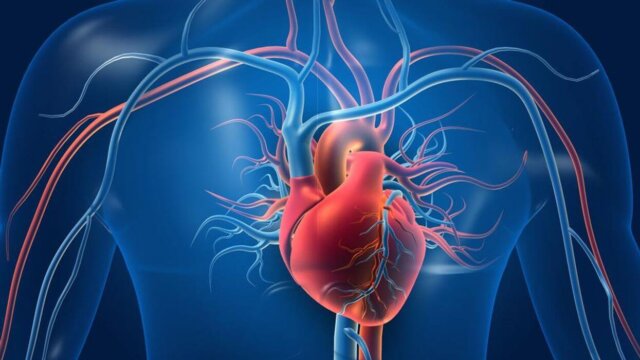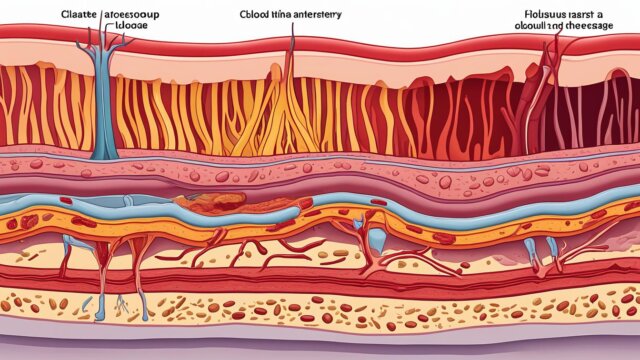FTC disclaimer: This post may contains affiliate links and we will be compensated if you click on a link and make a purchase.
Did you know up to 20% of people have food intolerances? These reactions can cause bloating, gas, stomach pain, and diarrhea. Unlike food allergies, they happen when the body can’t digest certain foods well.
If you’re dealing with food intolerance, you’re not alone. Many people with irritable bowel syndrome (IBS) also have food intolerances. Symptoms can include migraines, headaches, and feeling run down, making life tough.
Key Takeaways
- Food intolerances affect up to 20% of people.
- Symptoms include bloating, gas, stomach pain, diarrhea, and more.
- They’re caused by trouble digesting certain foods, not an immune issue.
- Lactose, fructose, and gluten are common culprits.
- Finding out what you’re intolerant to can be hard, often needing elimination diets and food journals.
Understanding Food Intolerance
What is Food Intolerance?
Food intolerance is when your body can’t break down certain foods well. It’s not the same as a food allergy, which is an immune reaction. Food intolerances cause symptoms but aren’t dangerous. How much of the food you eat affects how bad the symptoms get.
Difference Between Food Intolerance and Food Allergy
Food allergy symptoms can show up fast, within an hour. However, food intolerance symptoms might take hours or days to appear and are usually milder.
Food allergies can be serious, even life-threatening, if not treated right away. However, food intolerances mainly cause stomach problems like bloating and gas.
Food intolerances might run in families and can be linked to gut health. Food allergies affect about 4% to 6% of kids and 4% of adults. However, up to 20% of people might have food intolerances.
“Food sensitivities, or non-classical food allergies, are more common than classical food allergies.”
Knowing the difference between food intolerance and allergy is key. They need different ways to be handled and treated.
Common Symptoms of Food Intolerance
If you struggle with food intolerance, you might face some tough digestive problems and ongoing symptoms. You could have diarrhea, bloating, too much gas, and stomach pain. Other signs include headaches, feeling tired, nausea, constipation, joint pain, or skin rashes.
How bad these symptoms are and how long they last can vary a lot. Sometimes, you might feel sick within a few hours. Other times, it could take days.
Some food intolerances are more common than others. For example, lactose intolerance, which is when your body can’t break down sugar in milk and dairy, affects about 65% of people worldwide. Other common ones include gluten, histamine, caffeine, alcohol, sulfites, salicylates, and MSG.
Food intolerance can also lead to bigger health problems, like not getting enough nutrients and health issues, if not handled right. It’s key to get help from a doctor to figure out and manage your food intolerance symptoms.
Dealing with food intolerance can be tough, but you can take charge of your symptoms and better your gut health with the right support and diet changes. With your doctor’s help, you can find out what foods trigger your issues and make a plan to lessen your discomfort and eat well.
Symptom | Prevalence |
|---|---|
Diarrhea, Bloating, Farting, Tummy Pain | |
Headache, Fatigue, Nausea, Constipation, Joint Pain, Rashes | |
Lactose Intolerance | |
Gluten, Histamine, Caffeine, Alcohol, Sulfites, Salicylates, MSG Intolerance |
Causes of Food Intolerance
Food intolerances can come from enzyme issues and trouble absorbing nutrients. They often happen when we can’t break down certain foods like lactose, fructose, or gluten.
Lactose Intolerance
Lactose intolerance is caused by not having the lactase enzyme. This enzyme helps digest the sugar in milk. Without it, eating dairy can cause bloating, gas, and diarrhea.
Fructose Intolerance
Fructose intolerance means the body can’t absorb fructose well. Fructose is in many fruits and sweet foods. It can cause stomach pain, bloating, and diarrhea if eaten in large amounts.
Gluten Intolerance
Gluten intolerance happens when the body can’t break down gluten in wheat, barley, and rye. This can cause many symptoms like stomach issues, tiredness, and even brain problems.
Other reasons for food intolerances include enzyme problems, too much bacteria, and digestive tract issues. Knowing the cause is key to treating food intolerance.
“Food intolerance can be a complex and multifaceted condition, with various potential causes that require careful diagnosis and management.”
Cause | Description | Affected Population |
|---|---|---|
Lactose Intolerance | Inability to digest milk sugar (lactose) due to lactase enzyme deficiency | 13% of ethnic Chinese adults |
Fructose Intolerance | Malabsorption of fructose, a natural sugar found in many fruits and sweeteners | 40% of individuals in the western hemisphere |
Gluten Intolerance | Inability to digest the gluten protein found in wheat, barley, and rye | Affects various bodily systems besides the digestive system |
Understanding food intolerance helps people find and manage their food triggers. This can lead to better digestion and overall health.
Food Intolerance Triggers
Knowing what foods cause food intolerance is key to feeling good and staying healthy. Food allergies and intolerances are different. Allergies happen when the immune system reacts. Intolerances affect the digestive system and cause bad reactions after eating certain foods.
Milk and Dairy Products
Lactose intolerance is a common food intolerance. It’s more common in people from Asia, Africa, and Native America. Without the enzyme lactase, eating dairy like milk and cheese can cause bloating and diarrhea.
Gluten-Containing Grains
Gluten in wheat, barley, and rye can upset people with celiac disease or gluten sensitivity. It can cause stomach problems and even headaches. But it won’t lead to anaphylaxis, a serious allergic reaction.
Food Additives and Preservatives
Some additives like MSG and sulfites can cause food intolerance. Taking them out of your diet can help if you have IBS or other digestive issues.
Avoiding foods that trigger your intolerance can help you feel better. This includes dairy, gluten, and additives.
Trigger Food | Potential Symptoms | Underlying Cause |
|---|---|---|
Milk and Dairy Products | Bloating, gas, diarrhea | Lactose intolerance |
Gluten-Containing Grains | Gastrointestinal issues, joint pain, headaches | Celiac disease or non-celiac gluten sensitivity |
Food Additives and Preservatives | Digestive problems, irritability | Sensitivity to ingredients like MSG and sulfites |
Diagnosing Food Intolerance
Finding out what food intolerance you have can be hard. There’s no one test for it, except for a few like lactose intolerance or celiac disease. The best way is often an elimination diet. This means you stop eating foods you think cause problems.
Elimination Diet
An elimination diet means you avoid foods you think cause your symptoms. This lets you and your doctor see if eating these foods makes your symptoms worse. With time and careful watching, you can find out which foods are the troublemakers. This helps you plan your diet better in the future.
Food Diary
Keeping a food diary is a great way to figure out food intolerances. Write down what you eat and any symptoms you have. This might show you which foods cause problems. With this info and your health history, doctors can help you find the right treatment.
“The key to successfully identifying food intolerances is to be vigilant in recording your dietary intake and monitoring your body’s response. A detailed food diary can be a powerful diagnostic tool.”
There’s no single test for most food intolerances. But, using an elimination diet and a detailed food diary helps a lot. With your doctor’s help, you can make a plan to feel better and improve your life.
Testing for Food Allergies
Food intolerance and food allergy may seem similar but they are not the same. Doctors use tests like skin prick tests and blood tests to check for food allergies. They look for IgE antibodies to confirm an allergy. Sometimes, a food challenge test is done to be sure.
This test helps tell food allergies from intolerances. It makes sure the diagnosis is correct.
Skin Prick Test
Skin prick tests are a way to check for food allergies. A tiny bit of the suspected allergen is put on the skin. Then, doctors watch for a reaction in 10-15 minutes.
If a wheal, or raised spot, shows up, it means a positive result.
Blood Tests
Blood tests, or IgE antibody tests, check how the body reacts to foods. They look for IgE antibodies to certain food proteins. You can get the results in one to two weeks.
Food Challenge Test
The food challenge test is the best way to confirm a food allergy. It involves eating the suspected allergen in small amounts under a doctor’s watch. This test can take a while, cost a lot, and be risky because of the chance of a bad reaction.
Always see an allergist for the right diagnosis and care of food allergies. These tests help find allergies, but they’re not always 100% sure. People can start having allergies at different times in their lives, so a full medical history is key.

To sum up, tests for food allergies include skin prick tests, blood tests, and food challenges. It’s important to work with a healthcare expert for the right diagnosis and care of food issues.
Managing Food Intolerance
Dealing with food intolerance needs a careful plan. First, find and avoid the trigger foods. This means trying an elimination diet and keeping a food diary to see which foods cause problems. Supplements like enzymes to help digest specific nutrients, such as lactase for lactose intolerance, can also be useful.
Avoiding Trigger Foods
To manage food intolerance, stop eating the foods that bother you. You might take out suspected foods and then add them back slowly to see how you react. Keeping a detailed food diary helps figure out which foods make you feel bad.
Dietary Supplements
Along with avoiding certain foods, dietary supplements can help with food intolerance. For example, people with lactose intolerance might use lactase enzyme supplements to digest lactose. Those with gluten issues might find digestive enzyme supplements useful for breaking down gluten.
It’s important to work with a healthcare professional to create a diet plan that fits you. This way, you get strategies that meet your specific needs and avoid discomfort.
“Personalized nutrition is the key to effectively managing food intolerance and maintaining a balanced, healthy diet.”
Lifestyle Modifications for Food Intolerance
Managing food intolerance is more than just changing what you eat. It’s about changing your whole life to feel better. Maintaining good gut health, managing stress levels, and engaging in regular physical activity help a lot. These things make your digestion better and lessen food intolerance symptoms.
Cultivating Gut Health
Having a healthy gut is key if you have food intolerance. Eating probiotic-rich foods like yogurt, kefir, and fermented veggies helps balance gut bacteria. Consuming fiber-rich foods like whole grains, fruits, and veggies feeds the good bacteria too. This makes your digestion better.
Stress Management
Stress makes food intolerance worse. Using stress-reducing techniques like meditation, deep breathing, or yoga helps. It’s as important to take care of your mind as it is your diet.
Regular Physical Activity
Being active helps with food intolerance. Exercise boosts digestion, lowers inflammation, and keeps your gut healthy. Incorporating a mix of aerobic, strength, and flexibility exercises is good for your health.
Changing your diet and lifestyle together can really help with food intolerance. It makes you feel better overall.

Food Intolerance in Children
Food intolerance is common in kids. Things like dairy, gluten, and food additives can cause it. Spotting and handling these early helps kids grow right. Parents need to know about food intolerance in kids.
Many kids with food sensitivities don’t get diagnosed or are wrongly treated. Signs like belly pain, diarrhea, and feeling sick might mean a food issue. Doctors might suggest removing foods, tests, or other steps to find the problem.
Food intolerances aren’t the same as food allergies. They don’t cause quick or big reactions. But, they can still affect a child’s health and happiness. To help, kids might need to eat differently, get advice on nutrition, and take supplements.
Getting help from a dietitian is key for kids with food intolerances. They can make a diet plan, watch over what the child eats, and suggest safe foods. With the right care, kids can do well and eat a balanced diet.
Diagnostic Approach | Description |
|---|---|
Elimination Diet | Removing suspected trigger foods from the diet for a period, then reintroducing them to identify the cause of intolerance. |
Blood Tests | Measuring the levels of certain antibodies or enzymes to detect food intolerances. |
Breath Tests | Measuring hydrogen levels in the breath after consuming a problem food to diagnose conditions like lactose or fructose intolerance. |
Endoscopy/Colonoscopy | Examining the gastrointestinal tract for signs of food intolerance-related inflammation or damage. |
Cross-Reactivity and Food Intolerance
Food intolerance can sometimes be linked to cross-reactivity. This means a person’s reaction to one food can also affect another food. For instance, someone with lactose intolerance might also react to other dairy items. Or, a person with gluten intolerance might feel bad after eating other grains with gluten.
This cross-reactivity is more common in people with food allergies or sensitivities. Their immune system might overreact to similar food proteins.
One example of cross-reactivity is between apple and birch pollen. Allergic reactions can also happen between some fruits or veggies and latex, known as latex-food syndrome. If a person reacts to a food, they might need to avoid similar foods to prevent more reactions.
Food | Cross-Reactive Food |
|---|---|
Apple | Birch pollen |
Hazelnut | Cob hazel |
Pineapple | Latex |
Lentil | Pea |
How important cross-reactivity is can vary, with some cases being medium in importance. It’s key to not cut out important foods without proper tests and a doctor’s say-so.

Knowing about cross-reactivity is key for people with allergies. It helps them make better food choices and handle their symptoms better. With help from an allergist, people can find out which foods cause their reactions. Then, they can make a plan to deal with their food intolerance and cross-reactivity.
Exercise-Induced Food Intolerance
For some, food intolerance gets worse or starts with exercise. This is called exercise-induced food intolerance. It makes people feel bad after eating certain foods and then working out.
Exercise makes your body temperature go up. This can make you feel symptoms like itching, dizziness, and even anaphylaxis.
People with this issue should skip the trigger food for a few hours before working out. This helps stop bad symptoms from happening.
Common foods that cause this problem are wheat, dairy, and some additives or preservatives. Knowing what foods trigger it and planning your workouts is key.
If you think you have exercise-induced food intolerance, talk to your doctor. They can help figure out what foods to avoid and how to safely work out. With the right plan, you can still enjoy exercise without bad reactions.
Histamine Intolerance and Food Intolerance
Histamine intolerance is a food issue where the body can’t break down histamine. Histamine is in some foods and used as a preservative. This can cause headaches, hives, stomach problems, and low blood pressure.
Foods like aged cheeses and some fish can make symptoms worse. Food additives and preservatives with histamine also play a role. To manage histamine intolerance, avoid these foods and check food labels for histamine.
Symptoms and Diagnosis
Common symptoms include stomach issues, pain, bloating, diarrhea, and nausea. A 2019 study found people had an average of 11 symptoms, with most having over 3.
Diagnosing histamine intolerance is hard because there’s no test for it. Doctors might suggest an elimination diet and a food diary to find out what causes problems. They might also order a blood test for DAO deficiency.
Managing Histamine Intolerance
Managing histamine intolerance means eating a low-histamine diet, which can help in a few weeks. But, there are different ways to do this, and it’s best to talk to a healthcare professional for advice.
DAO supplements might help, but we need more studies to be sure. Avoiding foods with histamine, reading labels, and keeping a food diary can also help.

“Properly managing histamine intolerance requires a collaborative effort between the individual and their healthcare team to identify and avoid trigger foods, while ensuring a balanced and nutritious diet.”
Differential Diagnosis: Food Intolerance vs. Other Conditions
It can be hard to tell food intolerance from other health issues because symptoms can be similar. Doctors need to look closely to find the real cause and treat it.
About 15% to 20% of people have food intolerance. But, only 2% to 5% of adults have a true food allergy. Non-immunological food intolerances are much more common.
Food intolerance can cause stomach problems, bloating, and headaches. These symptoms can also happen with food poisoning, histamine toxicity, lactose intolerance, and gluten intolerance. Doctors use history, tracking symptoms, and tests to tell these apart.
IBS can get worse after eating certain foods, hinting at a food intolerance. Eosinophilic Esophagitis (EoE) and Food Protein Induced Enterocolitis Syndrome (FPIES) also cause bad reactions to some foods.
Food allergies can be very serious and need quick action with epinephrine injectors. Food intolerances are usually not as severe. Getting the right diagnosis is key to handling these issues safely.
With help from doctors, people can figure out their food issues and find relief. The right treatment can make life better for many.
Food Intolerance
Food intolerance affects about 8% of kids under 5 and 4% of adults. It’s not the same as a food allergy and isn’t usually dangerous. It leads to symptoms like bloating, gas, diarrhea, and headaches.
To manage food intolerance, it’s key to know what foods trigger it. Lactose intolerance can cause stomach pain, cramps, and more. Gluten intolerance might lead to joint pain, brain fog, and other issues.
Working with doctors to create a diet plan can help. Keeping track of what you eat and reading labels helps too. Making changes to your diet and lifestyle can ease digestive problems and boost your health.
FAQ
What is food intolerance?
Food intolerance is when your body can’t break down certain foods well. It’s not the same as a food allergy, which is an immune reaction.
What are the common symptoms of food intolerance?
Common signs include bloating, gas, stomach pain, diarrhea, headaches, a runny nose, and feeling unwell.
What are the most common causes of food intolerance?
Common causes include not having the right enzymes, like lactase for lactose intolerance. Fructose intolerance happens when the body can’t absorb fructose well. Gluten intolerance is when the body can’t digest gluten properly.
What are the most common trigger foods for food intolerance?
Common trigger foods are dairy like milk, cheese, and yogurt for lactose intolerance. Gluten in grains like wheat, barley, and rye also triggers reactions. Some foods have additives like nitrates, MSG, and sulfites that can cause issues.
How is food intolerance diagnosed?
There’s no test for most food intolerances, except for lactose intolerance and celiac disease. The best way is to try an elimination diet. Keeping a food diary can also help find out which foods cause problems.
How is food intolerance different from food allergy?
Food intolerance and allergy have similar symptoms but are different. Food allergy is an immune reaction that can be dangerous. Food intolerance is a digestive issue and is usually not dangerous.
How can food intolerance be managed?
Managing food intolerance means avoiding the foods that cause problems. Supplements like enzymes can help. Keeping your gut healthy, managing stress, and staying active can also help.
Can food intolerance affect children?
Yes, kids can have food intolerance too. Common triggers include dairy, gluten, and some additives. Parents should work with doctors to find and avoid the problem foods.
What is cross-reactivity in food intolerance?
Cross-reactivity means reacting to one food because of another. This is more likely in people with allergies or sensitivities. Their immune system might react to similar proteins in foods.
What is exercise-induced food intolerance?
This is when exercise makes you feel sick, like itchy, dizzy, or even anaphylactic. The body’s temperature going up during exercise can cause these symptoms.
What is histamine intolerance and how is it related to food intolerance?
Histamine intolerance is when the body can’t break down histamine in foods. This can cause headaches, hives, stomach problems, and low blood pressure.
How is food intolerance diagnosed differently from other conditions?
Figuring out food intolerance is tricky because symptoms can be like other health issues. Doctors have to rule out other things like allergies, poisoning, histamine issues, and digestive problems.








